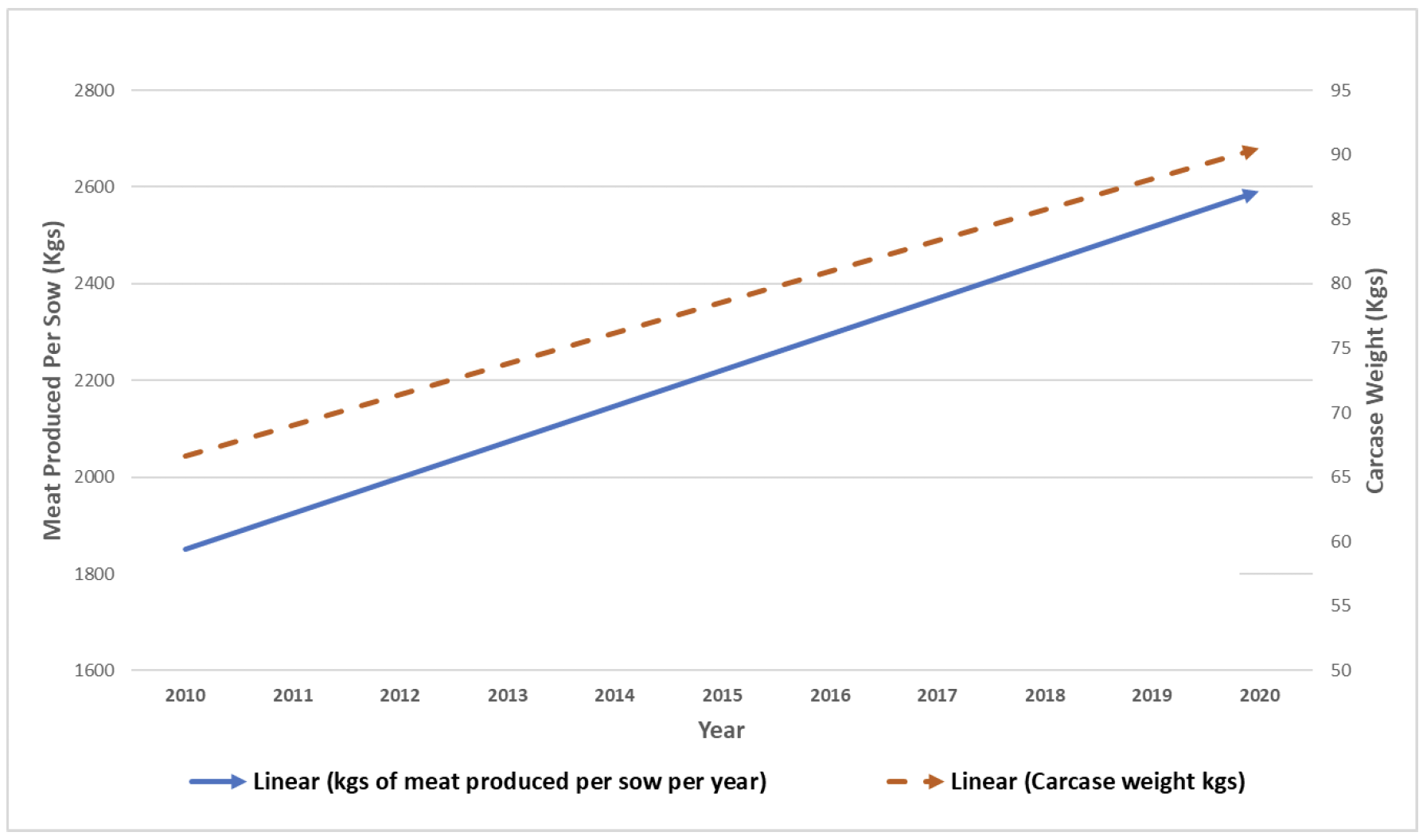Pig sector - reducing greenhouse gas emissions: bringing home the bacon - report
Report from the Scottish Pig Industry Leadership Group, one of the farmer-led groups established to develop advice and proposals for the Scottish Government. It focusses on how to cut emissions and tackle climate change, something that was re-emphasised in the updated Climate Change Plan.
4. What is the Environmental Impact of Pig Production in Scotland?
In common with all farming operations, pig production in Scotland has an impact upon the environment as it converts a range of inputs into nutritious protein. The following chart is based on carbon footprinting carried out on Scottish pig units last year and highlights the main factors that generate carbon emissions on pig units:

(SRUC)
These figures are based upon the average total from six units that used the AgRECalc carbon foot printing tool in 2019.
Emissions associated with feed production are clearly the major contributor, particularly taking account for the Land Use Change (LUC) that accounts for deforestation linked to soya production. Digestive methane emissions are negligible, but emissions of both methane and nitrous oxide from manures are more notable. What is more remarkable is that the UK pig industry has reduced its Global Warming Potential by 37% in the indoor sector and 35% outdoors as illustrated in the chart below[1]:

(M. Ottosen et al, 2021)
This is a major achievement for an industry in which on farm improvements to pig health, welfare, productivity and financial sustainability have lowered their carbon footprint. This has happened almost as a side-effect rather than being an explicit objective and without significant support from government. What makes this more remarkable, is that UK output of pigmeat was the same in 2020 as it was in 2000. The reductions are purely down to improvements in production efficiency rather than by simply reducing the number of pigs.
These reductions were attributed by the authors to three main factors:
- Changes in animal performance, which enabled a decreased energy concentration in feed
- Inclusion of alternative, home grown ingredients where possible
- Increased slaughter weight without a corresponding increase in inputs
The inclusion of imported soyabean meal is the most significant feed contributor. It is imported, mainly from South America and so has a high Global Warming Potential associated with its production and transport. However, over the last two decades, pig producers have made a conscious effort to drive improvements in feed utilisation performance and growth rates.
The chart below highlights the progress which Scottish producers have made - increasing growth rate through genetics and careful management whilst reducing the amount of feed required to achieve that growth:

(Aberdeen Pig Benchmarking Group)
The next chart highlights the steady increase in the weight of each pig that has been achieved and so the corresponding increase in the total amount of meat produced for every sow on breeding farms:

(Aberdeen Pig Benchmarking Group)
Combining these improvements gives an indication of how the reductions in CO2 per unit of output have been achieved. These significant improvements over the last decade mean that the pork is being produced with a far lower CO2 output per kg of meat. The reason for this is shown in the following chart:

(Aberdeen Pig Benchmarking Group)
With feed being responsible for 5.28kg of CO2/kg per kg of pig meat last year, we have assumed that it was responsible for 5.92kg of CO2 in 2011, so this activity alone reduced the GHG emissions from the sector by more than 1% every year.
Biodiversity
The benefits of using outdoor pigs as a break crop from continual arable production has long been understood, with improvements in soil fertility clearly evident after the pigs have moved on. More recently, Scottish outdoor producers have undertaken biodiversity audits annually to understand how they can enhance their local environment, for example, by sowing pollinator margins or creating habitats in areas of the field less suited to production.

(©Karro Food Group)
Biodiversity challenges are less relevant to indoor production because it tends to involve only buildings, with other land on the farm considered to be part of the arable or extensive livestock system and so biodiversity measures are linked to those enterprises instead. This is the significant drawback of considering the environmental impact of individual enterprises on mixed farms – this report is only one part of the wider integrated picture of Scottish farming and so there is considerable appeal in the Integrated Farm Management approach advocated by the Arable Cliimate Change Group.
There is, however, a need for continued focus to minimise the airborne and water-borne pollutants that affect the wider environment on all types of units. M. Otteson et al (2021)[2] also modelled reductions in the region of 20% over the last 20 years for Terrestrial Acidification Potential and Freshwater Eutrophication Potential, both of which reflect reductions in the impact upon the environment for wildlife.
Contact
There is a problem
Thanks for your feedback